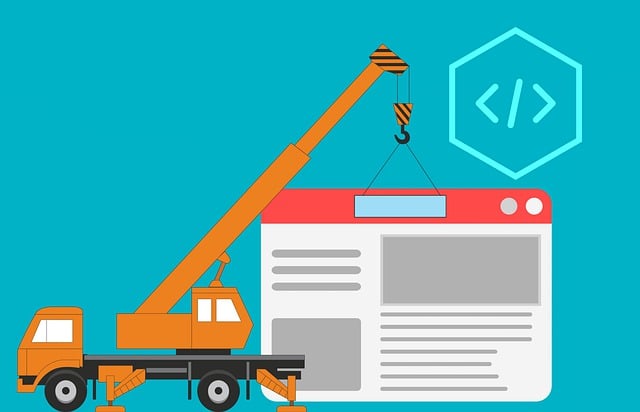UI/UX design is paramount in today's competitive mobile app market. Effective UI design leverages visual hierarchy and user research to create intuitive interfaces, while UX design ensures functionality and usability. Key aspects include strategic information architecture, seamless navigation, iterative prototyping, and accessibility for diverse users. Trends in 2023 focus on minimalism, clean designs, and enhanced accessibility. Consistency across platforms, through a defined visual language and responsive design, is crucial for user engagement and brand identity.
“Unleash the power of exceptional user experiences with a deep dive into the world of UI/UX design for mobile apps. This comprehensive guide explores fundamental principles, from visual hierarchy and user research to information architecture and accessibility. Learn how intuitive navigation and cross-platform consistency enhance usability. Discover trending innovations in 2023 that redefine app interfaces, ensuring every interaction is seamless and inclusive. Elevate your UI design skills and create apps that captivate users.”
Understanding UI/UX Design Fundamentals for Mobile Apps

In the realm of mobile app development, UI/UX design plays a pivotal role in shaping user engagement and overall satisfaction. Understanding fundamental UI design principles is essential for crafting intuitive and visually appealing interfaces that resonate with users. UI design involves the layout, visual elements, and interactive components that users directly interact with on their screens. It’s about creating an interface that is not just aesthetically pleasing but also easy to navigate and understand.
For mobile apps, UX (User Experience) design complements UI by focusing on functionality, usability, and user behavior. A well-designed UX ensures that the app meets user needs efficiently, effectively, and satisfactorily. By combining compelling UI aesthetics with thoughtful UX considerations, designers can create mobile applications that offer seamless experiences, encouraging users to return and fostering a loyal user base. This holistic approach is key to standing out in today’s competitive app market.
The Role of Visual Hierarchy in Effective UI Design

In effective UI design, visual hierarchy plays a pivotal role in guiding users through an app’s interface. It refers to the arrangement and organization of visual elements on a screen, determining which information is most prominent and easily accessible. By using techniques like size, color, contrast, and placement, designers can create a clear path for users’ eyes to follow, making it easier for them to navigate and understand the app’s functionality. For instance, placing important buttons or links at strategic locations and ensuring they stand out from surrounding elements helps capture users’ attention quickly.
A well-designed visual hierarchy not only enhances usability but also significantly improves the overall user experience (UX). It allows users to prioritize tasks, anticipate outcomes, and efficiently interact with the app. In UI design, this translates into higher engagement, reduced confusion, and faster task completion—all vital factors for an app’s success. Designers should strive to create a natural flow that reflects the information architecture of the application, ensuring every element serves a purpose and contributes to an intuitive user journey.
User Research and Personas: Crafting App Experiences

User research is a cornerstone in crafting effective app experiences, and at its heart lies understanding your target audience. This involves delving into demographics, behaviors, and motivations to create user personas—fictional representations of ideal users. By adopting this strategy, UI designers can tailor interactions and aesthetics to cater to specific needs and preferences, ensuring the app feels intuitive and relevant to each persona.
Personas guide design decisions, from information architecture to visual styling. They help prioritize features, influence interface layout, and even shape the overall tone and language used within the app. Through iterative user research and persona refinement, designers can create apps that resonate with their intended users, fostering engagement and enhancing satisfaction.
Designing Intuitive Navigation for Seamless User Flows

In the realm of UI design, intuitive navigation is the linchpin for crafting seamless user flows. It involves structuring an app’s interface in a way that allows users to effortlessly find their desired functions and content. A well-designed navigation system leverages familiarity, consistency, and predictability to guide users through the app without friction. This ensures users can accomplish tasks efficiently, enhancing overall satisfaction.
For instance, employing clear labeling, logical grouping, and hierarchical structures facilitates easy exploration. Additionally, incorporating familiar patterns from other popular apps users are already comfortable with, further streamlines the navigation process. The goal is to create a user flow that feels natural and intuitive, enabling users to engage with the app’s features and functionalities without constant guidance or instruction.
The Art of Information Architecture in App Development

In the realm of app development, information architecture (IA) stands as a cornerstone of successful UI/UX design. It’s the art of organizing and structuring content in a way that makes sense to users, ensuring they can navigate through an app intuitively and efficiently. Skilled designers understand that well-crafted IA isn’t just about sitemaps; it involves carefully considering user needs, behaviors, and goals. Through strategic labeling, hierarchical navigation, and logical grouping, apps become more accessible and user-friendly.
Effective IA translates into a seamless user experience. It allows users to quickly comprehend app functionality, find desired features, and accomplish tasks without frustration. By streamlining information, designers create a harmonious balance between visual aesthetics (UI) and underlying functionality, fostering a positive connection with the app. Ultimately, a thoughtful approach to information architecture becomes a silent yet powerful force driving user engagement and satisfaction.
Prototyping and Usability Testing: Iterating for Perfection

Prototyping is a crucial step in the UI/UX design process, allowing designers and developers to visualize and test interactive digital products before development begins. By creating prototypes, designers can bring their concepts to life, simulating user interactions and gathering valuable feedback. This iterative approach ensures that the final product aligns with user needs and expectations. Usability testing is an integral part of this phase, where real users interact with the prototype, providing insights into its functionality and usability.
Through careful observation and data collection during testing, designers can identify pain points, understand user preferences, and make informed decisions to enhance the overall UI design. This continuous improvement process enables them to refine the app’s layout, navigation, and visual elements, ultimately resulting in a seamless and intuitive user experience.
Accessibility Considerations for Inclusively Designed Apps

In the realm of UI/UX design for apps, ensuring accessibility is not just a moral imperative but also a key strategy to create truly inclusive experiences. It involves making design choices that accommodate users with diverse abilities and impairments, from visual and auditory differences to motor control issues. By implementing features like high-contrast modes, alternative text for images, and closed captioning for videos, designers can significantly enhance the app’s usability for everyone.
Accessibility in UI design goes beyond compliance with standards like WCAG (Web Content Accessibility Guidelines). It involves considering different input methods, such as voice commands or gesture controls, and providing options for users to customize their interface. This inclusive approach ensures that your app is not just usable but truly accessible, catering to a broader audience and reflecting modern design principles aimed at fostering digital equity.
Trends Shaping Modern UI/UX Design in 2023

In 2023, several trends are reshaping the landscape of UI/UX design for apps, driven by evolving user expectations and technological advancements. One notable trend is the increasing emphasis on minimalism and clean designs, where simplicity and ease of use take center stage. Designers are moving away from cluttered interfaces to create uncluttered, visually appealing layouts that enhance user experiences without overwhelming them with excessive elements.
Another significant shift is the integration of interactive and animated elements to make apps more engaging. Micro-interactions and subtle animations add personality to UI design, providing users with immediate feedback and making app navigation more intuitive. Additionally, there’s a growing focus on accessibility, with designers prioritizing inclusive design practices that cater to users with diverse abilities, ensuring every user can interact with the app seamlessly.
Best Practices for Cross-Platform UI Consistency

Maintaining consistency across different platforms is a key aspect of successful UI/UX design for apps. To achieve this, designers must embrace best practices that ensure a seamless user experience regardless of the device or operating system. One fundamental practice is adopting a well-defined visual language, including a consistent color palette, typography, and style guidelines. This unified approach makes it easier for users to navigate and interact with your app, fostering familiarity and reducing confusion.
Additionally, responsive design techniques are essential. Designers should create flexible layouts that adapt gracefully to various screen sizes and resolutions. By utilizing relative units like percentages and ems, along with media queries, apps can maintain their visual integrity while providing an optimized experience on tablets, smartphones, and other devices. Such cross-platform consistency not only enhances usability but also contributes to a stronger brand identity, making your app more appealing to a broader audience.
